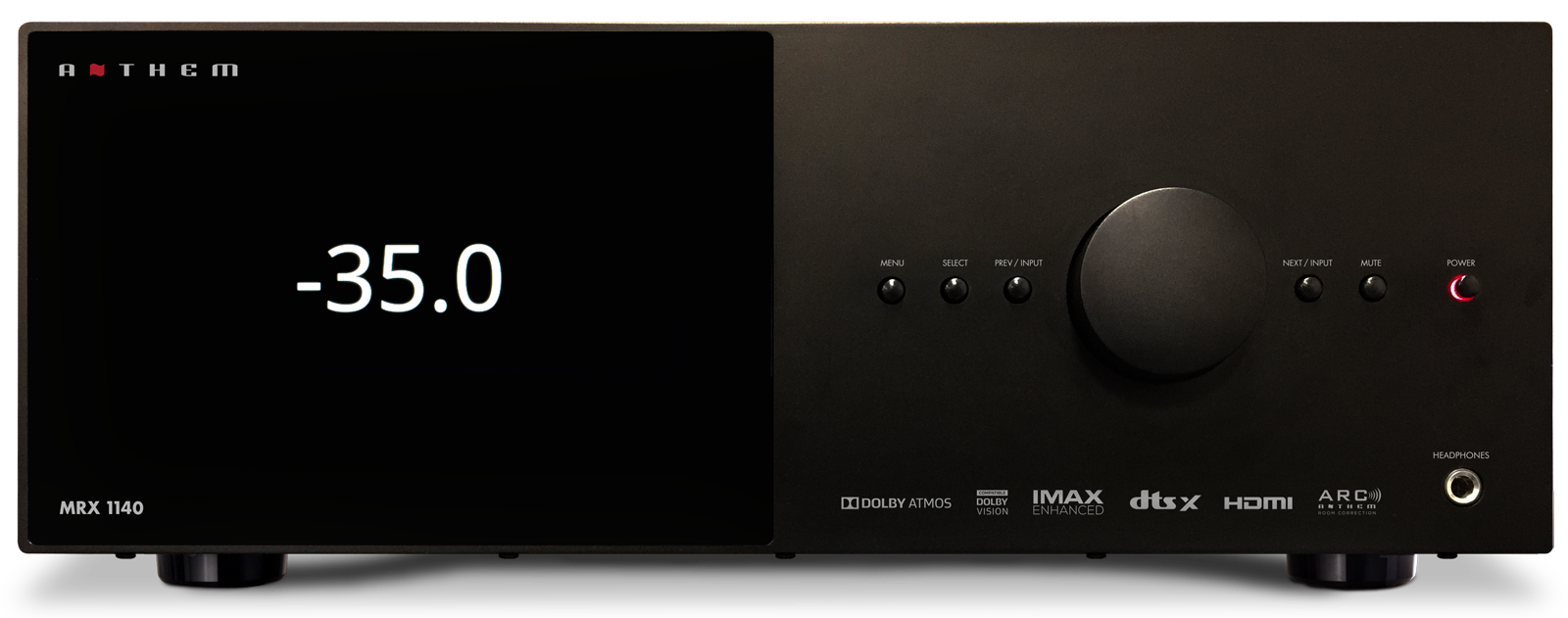Anthem MRX 1140 15.2 Pre-Amplifier / 11 Amplifier Channel AV Receiver with Dolby Atmos, DTS:X, IMAX Enhanced, Apple Airplay 2 & AR
Anthem’s MRX A/V Receivers are about maximizing performance for the money. Building on the feature set of our previous models, we’ve added the newest version of ARC Genesis, a redesigned and more accurate calibration microphone, Anthem Web User Interface, integrated streaming support, object-oriented audio codecs with support for up to 15.2 channels and the clean power delivery Anthem is known for with up to 140 watts per channel.
Anthem’s MRX A/V Receivers are about maximizing performance for the money. Building on the feature set of our previous models, we’ve added the newest version of ARC Genesis, a redesigned and more accurate calibration microphone, Anthem Web User Interface, integrated streaming support, object-oriented audio codecs with support for up to 15.2 channels and the clean power delivery Anthem is known for with up to 140 watts per channel.
The MRX 540, 740 and 1140 are a great way to bring premium audio to any home theater or media room. Seamlessly integrate your smart TV or projector with 7 HDMI inputs and 2 outputs, plus eARC. Ultra HD signals are passed through unaltered up to 18.2 Gbps with Dolby Vision, HDR and Hybrid Log Gamma support.
Anthem Web User Interface is now built in to all MRX Receivers and AVM Processors. Using a phone, tablet or laptop, owners can easily access any function or setting and make changes on the fly. Power the main or second zone on and off, adjust volume, change audio modes or tweak channel trims for a perfect surround sound experience. Web UI can also be used to calibrate speaker delays and levels and configure network settings/control options. Source devices can be renamed, simplifying set up by enabling the elimination of unused inputs. Installers can import and export files to make remote management simple and convenient.
MRX Series Receiver channels can be assigned in many ways. Unused amplifier channels can be re-assigned to Bi-Amplify demanding front speakers, power surrounds, presence speakers, or a second zone (Available on MRX 1140 and MRX 740).
Configure amplifier channels for your system’s needs, then perfect the presentation with ARC Genesis.
Additional information
| Height (without feet) | 6" (15.24 cm) |
|---|---|
| Height with Rackmount Kit | 4U |
| Width | 17" (43.18 cm) |
| Depth (including wifi ant not power cord) | 14-1/2" (36.4 cm) |






Reviews
There are no reviews yet.